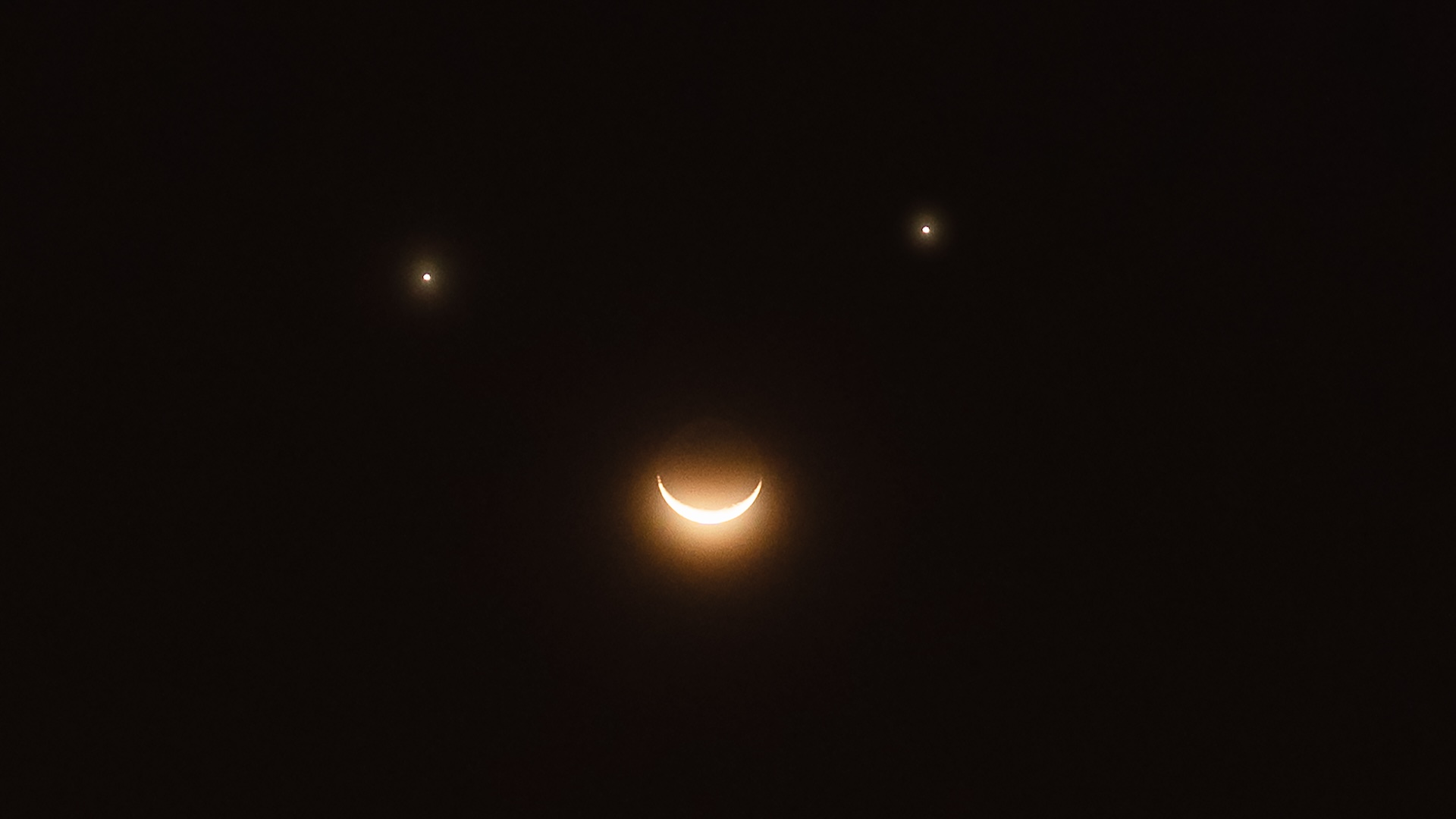
If you look up to the sky in the early hours of April 25 you might just see it smiling back at you, NASA skywatchers have forecast.
That’s when a rare celestial spectacle called a triple conjunction will occur. On the morning of Friday, April 25, Venus, Saturn and the crescent moon will appear close together in the predawn sky, forming a triangular formation reminiscent of a smiley face. You can spot the celestial spectacle close to the eastern horizon just before sunrise, according to NASA. Both planets are bright and easily seen with the naked eye, but a good backyard telescope or stargazing binoculars can help you pick out details on the smirking crescent moon.
Mercury may also be visible below the twinkling trio for those with a clear view of the horizon, according to NASA. Unlike the larger planets, it will appear very low in the sky, so may not be visible everywhere.
What is a triple conjunction?
In astronomy, a conjunction occurs when two or more celestial objects appear very close to each other in the night sky. When three objects are involved, it becomes a triple conjunction.
“Venus is higher above the eastern horizon with Saturn lower, and a thin, crescent Moon a bit lower and a little farther north,” NASA Solar System Ambassador Brenda Culbertson told local Kansas TV station KSNT. “The thin, crescent Moon looks like a smile. To some people, the triangle of bright objects may appear as a smiley face.”
Related: The 10 best stargazing events of 2025
The face will be visible from anywhere in the world with good viewing conditions, although the window in which to watch it will be narrow — Culbertson said that the alignment will slide into place at around 5:30 a.m on April 25 and the sun will rise around an hour later.
“Anyone wanting to try for a glimpse of the conjunction should find a clear eastern horizon from which to observe,” Culbertson said.
The conjunction will light up the skies just days after the Lyrids meteor shower peaks. The shower is ongoing, but the peak can be seen anytime between 10:30 p.m. and 5 a.m. local time from April 21 to 22, with little interference from the waning crescent moon. According to NASA, up to 15 meteors will be visible per hour under dark skies.



